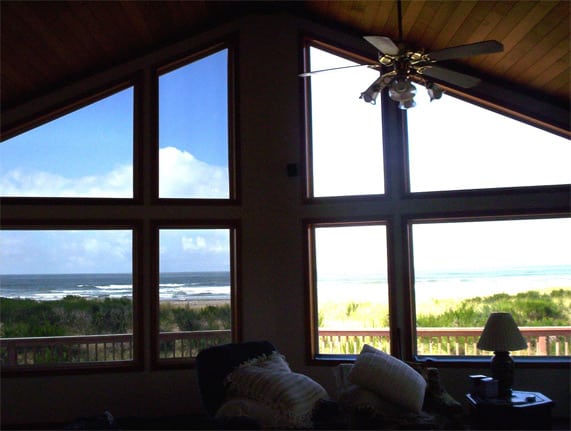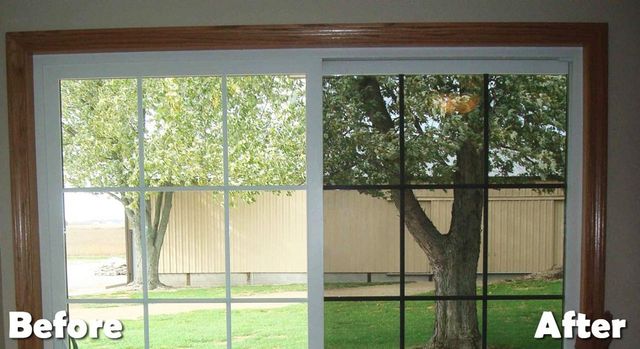Residential Window Tint for Large Windows: Maintain Comfort and Style
Residential Window Tint for Large Windows: Maintain Comfort and Style
Blog Article
How Residential Window Tinting Enhances Your Home's Energy Performance
Residential window tinting presents a compelling remedy for homeowners seeking to improve energy effectiveness within their space. By using specialized movies to home windows, it successfully lowers warm transfer, consequently stabilizing indoor temperatures and lessening the need for too much heating or air conditioning. This not just curtails energy intake but also gives a much more comfy setting by alleviating glare. Nonetheless, recognizing the subtleties of just how tinting jobs and selecting the appropriate kind for your home can be pivotal. Curiously, what variables should one think about prior to making this financial investment?
Understanding Window Tinting
Understanding home window tinting is vital for house owners seeking to enhance both comfort and power performance in their home. Residential Window Tint. Window tinting includes the application of a slim movie to the interior or outside surface of glass windows. This movie can dramatically modulate the quantity of sunshine and heat that goes into a home, thus influencing interior climate conditions
There are numerous kinds of window tinting films offered, each with unique residential or commercial properties. For example, colored movies take in solar power, while reflective movies disperse it away from the glass surface. Ceramic movies supply a balance of exposure and warmth being rejected, making them a popular selection among home owners. The efficiency of window tinting is commonly determined by its Visible Light Transmission (VLT) percentage, which indicates just how much light can go through the film.
Benefits of Power Efficiency
Home window tinting not just enhances visual appeals yet additionally plays a considerable function in improving power efficiency within residential spaces. By lowering heat transfer via home windows, tinted movies produce a much more secure indoor climate, which can cause substantial reductions in power consumption for heating & cooling. This energy performance converts into lower utility expenses, giving house owners with substantial long-term savings.

Additionally, window tinting enhances the convenience of living rooms. By reducing glare and obstructing damaging UV rays, tinted windows create a more positive environment, which can cause boosted health for owners. The security versus UV rays likewise aids preserve furniture and flooring from fading, adding to the longevity of house products.
Exactly How Tinting Works
Tinting movies run with a mix of advanced materials and modern technologies developed to regulate the quantity of solar power entering a home. Mainly composed of polyester, these films typically include metallic or ceramic particles that show and soak up heat. This twin ability allows them to dramatically decrease the penetration of ultraviolet (UV) rays and infrared radiation while permitting noticeable light to go through.
The performance of home window tinting is determined by its solar warmth gain coefficient (SHGC), which shows just how much solar power is transferred through the home window. Lower SHGC values are more effective as they represent greater warm being rejected. Furthermore, home window colors can feature a selection of tones, allowing homeowners to customize click resources their aesthetic preferences while enhancing power performance.
Moreover, these films function as an obstacle, stopping warmth loss throughout colder months by mirroring indoor warmth back right into the home. This thermal insulation effect enhances the air conditioning benefits gained throughout warmer months, adding to a well balanced indoor climate year-round. By managing solar energy successfully, household window tinting not only improves convenience but also plays a crucial duty in reducing energy usage and decreasing energy expenses.
Selecting the Right Color

There are various kinds of window films available, including dyed, metalized, and ceramic. Dyed movies are affordable however might have limited longevity. Metalized films use much better heat being rejected yet can hinder digital signals. Ceramic movies give excellent heat control without jeopardizing visibility and are extremely sturdy, making them a preferred choice.
Noticeable light Clicking Here transmission (VLT) is an additional vital aspect, as it indicates the quantity of all-natural light that can pass via the colored glass. House owners should choose a color with a VLT that enhances their lighting choices while still offering adequate glow reduction.
Furthermore, examining the solar heat gain coefficient (SHGC) can help establish exactly how well a tint can obstruct heat from sunshine. A lower SHGC suggests better heat control, ultimately improving power performance.
Installation and Upkeep Tips
Appropriate setup and maintenance are essential components in making the most of the advantages of residential window tinting. To attain optimum outcomes, it is suggested to hire a qualified professional for installment. This makes sure that the color is used correctly, preventing air bubbles, creases, or imbalance that could endanger efficiency. Experts likewise use specialized strategies and tools, which can boost the longevity and effectiveness of the tint.
Adhering to installment, maintenance is additional resources crucial to prolong the life of the window movie. It is advised to wait at the very least 30 days prior to cleansing the colored home windows to permit the glue to cure completely.
Dealing with these issues immediately can avoid additional damage and maintain energy efficiency. By adhering to these setup and upkeep suggestions, house owners can guarantee their home window tinting continues to provide considerable power cost savings and comfort for years to come.
Conclusion
Finally, residential home window tinting works as an efficient solution for enhancing energy efficiency within homes. By reducing heat transfer and blocking unsafe UV rays, window films add to decrease energy usage and boosted indoor convenience. The selection of appropriate tinting materials, along with proper installation and upkeep, further makes the most of these advantages. Inevitably, window tinting represents a sustainable investment that not only reduces utility bills yet likewise promotes a comfy living atmosphere throughout the year.
Window tinting involves the application of a thin film to the inside or outside surface area of glass windows. By decreasing warmth transfer through home windows, tinted movies produce a more steady interior climate, which can lead to considerable reductions in energy intake for home heating and air conditioning.The efficiency of window tinting is measured by its solar warmth gain coefficient (SHGC), which indicates how much solar power is transferred with the home window. By managing solar energy effectively, domestic window tinting not only enhances comfort yet likewise plays an essential function in minimizing power usage and decreasing energy expenses.
By minimizing warm transfer and blocking damaging UV rays, home window movies add to lower energy consumption and boosted interior comfort.
Report this page